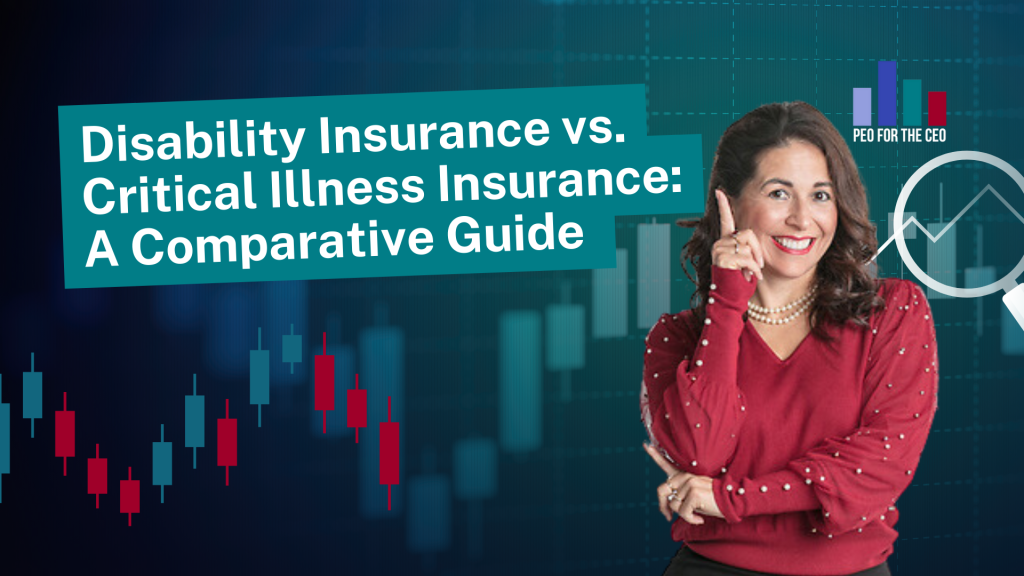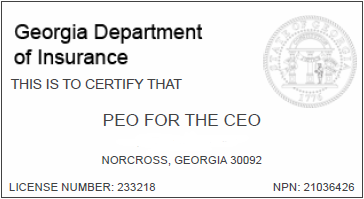Disability Insurance vs. Critical Illness Insurance: A Comparative Guide

When it comes to safeguarding yourself and your loved ones against the financial impact of unexpected health issues, disability insurance, and critical illness insurance play pivotal roles. These two types of coverage serve distinct purposes but complement each other when tailored to individual needs.
Let’s dive into the comparison between disability insurance and critical illness insurance. In this article, we’ll explore their differences, benefits, and considerations, helping you make an informed decision based on your unique needs and circumstances.
Disability Insurance:
Disability insurance is a type of coverage that provides financial protection if you become unable to work due to illness or injury. Here are the key points:
Purpose: Disability insurance replaces a portion of your income if you’re unable to work due to an illness or injury.
Coverage: It provides ongoing financial support during periods of disability.
Payment: Typically, it pays a percentage of your pre-disability income.
Occupational Class Impact: Premiums are closely linked to your occupational class. Riskier jobs may have higher premiums.
Challenges: Freelancers and those with variable incomes may find it challenging to obtain disability insurance.
Existing Coverage: Many people have disability coverage through group insurance plans or government programs.
Smoking Impact: Smoking status affects disability insurance premiums.
This can be a lifeline, ensuring that you can continue to meet your financial obligations, from daily living expenses to mortgage payments, even if you’re unable to earn an income.
Critical Illness Insurance:
Purpose: Critical illness insurance provides a lump-sum payment upon diagnosis of specific conditions (e.g., cancer, heart attack, stroke).
Coverage: It offers financial support for immediate expenses related to serious illnesses.
Payment: A lump sum is paid out upon diagnosis.
Overlap with Disability Insurance: Both aim to provide financial support but serve different purposes.
Smoking Impact: Smoking may affect eligibility and premiums.
Awareness of Existing Coverage: Understand existing group insurance or government programs to avoid duplication.
This can help cover medical expenses not covered by your health insurance, or even be used for anything you choose, such as taking time off work to recover or making adjustments to your home to better accommodate your health needs.
While both types of insurance provide significant benefits, it’s important to note that they come at a cost higher than some other insurance products, like term life insurance. The premiums for disability insurance and critical illness insurance reflect the higher likelihood of a claim being made during the policy term. Therefore, deciding between these insurance products — or determining the right combination of coverage — should be made on a case-by-case basis, tailored to the individual’s occupation, health preconditions, and overall risk profile.
Working with an experienced insurance broker is crucial in navigating these complex decisions. A knowledgeable broker will have experience with both types of policies and access to products from multiple companies, allowing them to compare and contrast options to find the best fit for your situation.
Group Disability Insurance
Group disability insurance is a type of coverage offered by employers. It usually replaces up to 60% of your income (minus any taxes on benefits) if you become disabled and can’t work. Here are the key points:
Short-Term Disability (STD):
- Replaces part of an employee’s income during a disabling injury or illness.
- Streamlines claims with compassionate nurse handlers.
- Integrates short-term disability and leave management processes.
Long-Term Disability (LTD):
- Provides continued income during extended disability.
- Emphasizes ability and functionality, not limitations.
- Includes a Return-to-Work Incentive Benefit.
Statutory Disability:
- Helps businesses stay compliant with state-mandated requirements.
- Offers guidance on meeting state rules and protecting the workforce.
Remember that group disability coverage can be either short-term or long-term, depending on the employer’s plan.
Group Critical Illness Insurance
Here are the key points related to group critical illness insurance:
Group Coverage:
Employer-Provided: Group critical illness insurance is typically offered by employers as part of employee benefits.
Coverage for All Eligible Employees: It covers all eligible employees, regardless of their health status.
Streamlined Enrollment: Employees can enroll during open enrollment periods or when they join the company.
Lump-Sum Benefit:
Payment: If an employee is diagnosed with a covered critical illness (e.g., cancer, heart attack, stroke), the policy pays a lump sum.
Use: The lump-sum benefit can be used for medical expenses, living costs, or any other needs.
Tax Implications:
Non-Taxable Benefit: Generally, the lump-sum benefit is not taxable income for the employee.
Cost Sharing:
Employer and Employee Contributions: Employers often share the cost of premiums with employees.
Remember that group critical illness insurance provides financial support during challenging times, helping employees focus on recovery without worrying about immediate expenses.
When it comes to Professional Employer Organizations (PEOs) and their impact on businesses, there are several key benefits, especially related to group insurance plans:
Cost Savings: PEOs can help businesses save costs by providing access to competitive group insurance rates. These rates are often more favorable than what small businesses could negotiate independently.
Risk Management: PEOs assist with risk management, ensuring compliance with employment laws and regulations. Handling HR-related compliance issues, help businesses avoid costly fines.
Access to Employee Benefits:
Through PEO-sponsored benefit plans, employees gain access to comprehensive benefits such as medical, dental, vision coverage, and life and disability benefits. The PEO handles administrative tasks, making it easier for businesses to offer these benefits.
Recommendations When Selecting A Group Insurance Plan:
Assess Your Business Needs:
- Understand your organization’s unique requirements, workforce size, demographics, and budget constraints.
- Consider the specific healthcare needs or preferences of your employees.
Types of Group Insurance Plans:
- Explore various types, such as health insurance, dental insurance, vision insurance, life insurance, disability insurance, and supplemental coverage (e.g., critical illness, accident insurance).
- Determine which plans align with your employees’ needs.
Coverage Options:
- Evaluate in-network vs. out-of-network coverage, prescription drug coverage, preventive care services, and pre-existing condition coverage.
- Consider flexibility for adding dependents or adjusting coverage levels.
Cost and Affordability:
- Compare premium rates, deductibles, co-payments, and out-of-pocket expenses.
- Balance affordability with comprehensive coverage.
Provider Networks:
- Assess the size and scope of each insurance provider’s network.
- Ensure it includes a wide range of healthcare providers, hospitals, and specialists in your area.
Remember, finding the right group insurance plan involves managing costs while providing adequate coverage for your employees.
Partnering with a PEO can streamline operations, reduce overhead, and provide access to affordable group insurance plans for small and mid-sized businesses.
With over 600 PEO companies, how do you choose? As your dedicated PEO broker, we take a holistic approach to finding the right PEO partner for your business, helping you maximize your savings potential and avoid any undue risks.
Ready to optimize your worker’s comp, and employee benefit plans and streamline your
HR processes? Contact Suzanna@PEOfortheCEO.com today for personalized assistance or schedule a chat with us.
Visit PEOfortheCEO.com to learn more.


